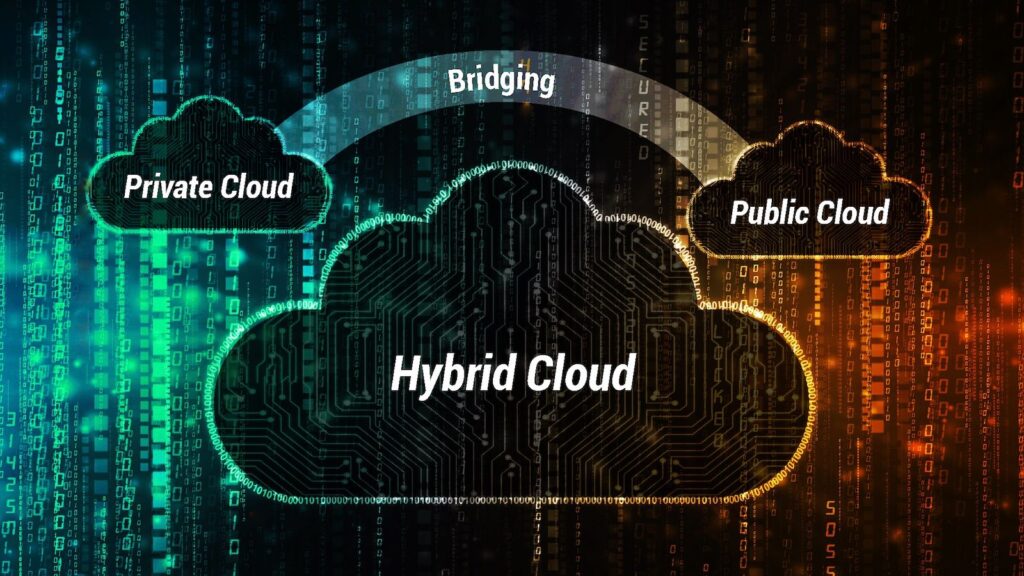
The Future of Hybrid IT Environments: Balancing Agility and Security
In an era marked by rapid technological advancements, businesses are constantly reevaluating their IT infrastructure strategies to keep pace with the evolving landscape. As organizations seek to maximize agility and efficiency while maintaining security and control, hybrid IT environments have emerged as a compelling solution. Hybrid setups come with their own advantages and disadvantages, but when done correctly, an organization can easily achieve a well-balanced and versatile IT infrastructure.
The Evolution of IT Environments
The traditional IT environment, characterized by on-premises data centers and infrastructure, has undergone a profound transformation in recent years. The rise of cloud computing, coupled with the proliferation of remote work and the Internet of Things (IoT), has reshaped the way businesses approach their IT infrastructure.
As organizations continue to adopt digital technologies, they face a fundamental choice: whether to maintain an entirely on-premises infrastructure, migrate to the public cloud, or strike a balance between the two through hybrid IT environments. It’s this latter option that has gained significant traction and is poised to shape the future of IT infrastructure.

Advantages of Hybrid IT Environments
Hybrid IT environments offer a wealth of advantages that resonate with businesses seeking a harmonious blend of flexibility and control:
- Scalability: One of the primary benefits of hybrid environments is the ability to scale resources up or down based on demand. This scalability empowers organizations to efficiently handle fluctuations in workloads and seize opportunities for growth.
- Cost Efficiency: Hybrid IT allows businesses to optimize costs by balancing the use of on-premises infrastructure with cloud resources. This flexibility helps manage expenses while ensuring performance and reliability.
- Data Security: Sensitive data can be retained within on-premises data centers, providing greater control and security. This is especially critical for industries with stringent compliance requirements.
- Disaster Recovery: Hybrid environments facilitate robust disaster recovery strategies by leveraging both on-premises and cloud resources. In the event of an outage or data loss, businesses can swiftly recover their operations.
Challenges of Hybrid IT Environments
While the advantages of hybrid IT environments are clear, they do come with their set of challenges:
- Complexity: Managing a hybrid environment can be complex, involving the orchestration of various components and ensuring seamless integration.
- Data Integration: Efficiently integrating data across on-premises and cloud environments can be challenging, requiring careful planning and implementation.
- Security: Ensuring consistent security measures across hybrid environments is paramount. The dynamic nature of hybrid IT demands robust security strategies.
- Network Performance: Network performance is a critical consideration, particularly in scenarios where data needs to traverse between on-premises and cloud resources.
Private cloud solutions can help address these challenges. Private cloud offers the security and control of an on-premises data center while incorporating the scalability and flexibility inherent in cloud computing. This blend of characteristics positions private cloud as an ideal component within hybrid IT environments, allowing businesses to strike a balance between data security and agility.

Effective Network Visibility and Security in Hybrid Environments
As businesses navigate the complexities of hybrid IT environments, network visibility and security emerge as central concerns. Achieving optimal network performance, detecting anomalies, and safeguarding sensitive data require robust solutions.
- Network Visibility: Effective network visibility is fundamental in ensuring the smooth operation of hybrid environments. It involves real-time monitoring and analysis of network traffic to detect issues and anomalies promptly. Businesses should consider investing in advanced network visibility solutions that provide insights into all network activities, whether on-premises or in the cloud.
- Security: Cybersecurity is a top priority in today’s digital landscape. Protecting data and applications across hybrid environments demands a multi-faceted approach. Intrusion detection, identity and access management, encryption, and vulnerability assessments are essential components of a comprehensive security strategy.
- Compliance: Businesses operating in regulated industries must adhere to stringent compliance requirements. Ensuring that security measures align with industry-specific regulations is critical to avoiding potential legal and financial consequences.
- Performance Optimization: Maintaining network performance in a hybrid environment requires diligent management. Load balancing, Quality of Service (QoS), and traffic optimization are strategies that can enhance network efficiency.
The Advantage in Hybrid IT Strategies
The advantages of implementing hybrid IT strategies extend beyond the immediate benefits of scalability, cost-efficiency, and data security. One of the cornerstones of these strategies is the ability to ensure effective network visibility and robust security in the complex hybrid landscape. To succeed in this endeavor, organizations must embrace advanced solutions that possess the flexibility to adapt to the ever-evolving technological landscape.
In today’s fast-paced digital world, network visibility is not merely a luxury but a necessity. It involves real-time monitoring and analysis of network traffic, enabling organizations to promptly detect and address issues, anomalies, or potential threats. In hybrid IT environments, where data traverses both on-premises and cloud resources, having comprehensive network visibility becomes paramount. It empowers IT teams to gain insights into all network activities, regardless of their location, thus facilitating better decision-making, improved resource allocation, and enhanced overall network performance.
The future of hybrid IT environments holds great promise as businesses strive to find the perfect equilibrium between agility and security in the ever-evolving tech landscape. The metamorphosis of IT infrastructures from traditional, on-premises setups to hybrid models reflects the dynamic nature of our digital age. Organizations are increasingly realizing the need for adaptability and scalability while upholding stringent security standards, which has propelled the rise of hybrid IT environments as a pivotal solution.

The advantages of adopting hybrid IT are manifold, from the flexibility to scale resources in response to demand fluctuations to cost efficiency and robust data security. The integration of private cloud solutions within these environments offers a secure and controlled foundation while preserving the agility inherent in cloud computing.
As businesses chart their course into the future, navigating the intricate web of hybrid IT environments, they must remain vigilant in their commitment to optimizing network performance, safeguarding sensitive data, and adhering to compliance standards. With the right strategies and technologies, organizations can harness the full potential of hybrid IT, ensuring that agility and security coexist harmoniously in their IT infrastructure.